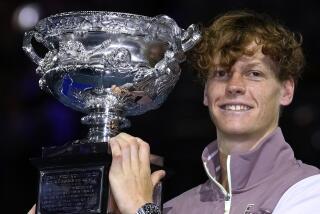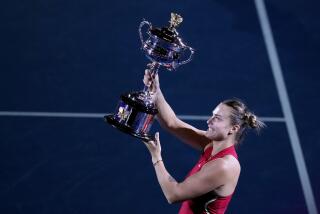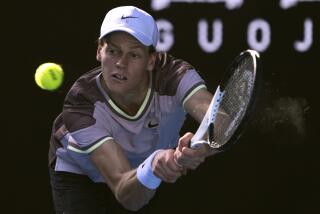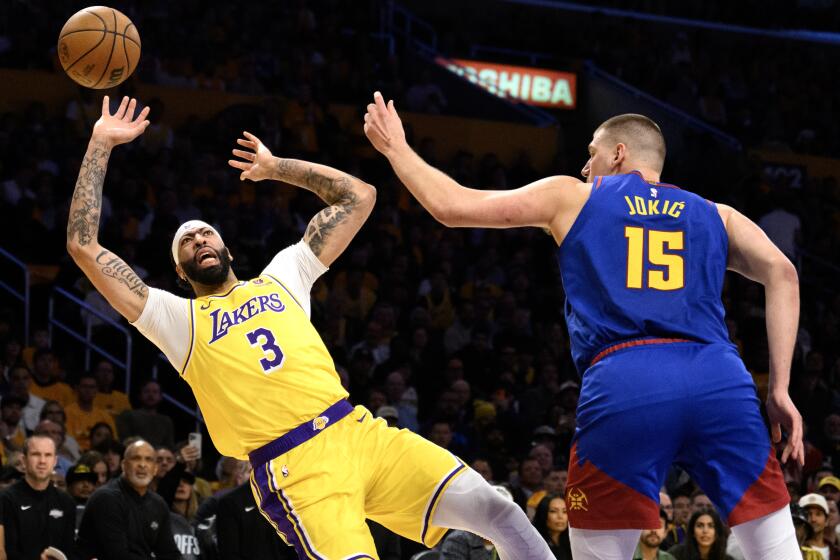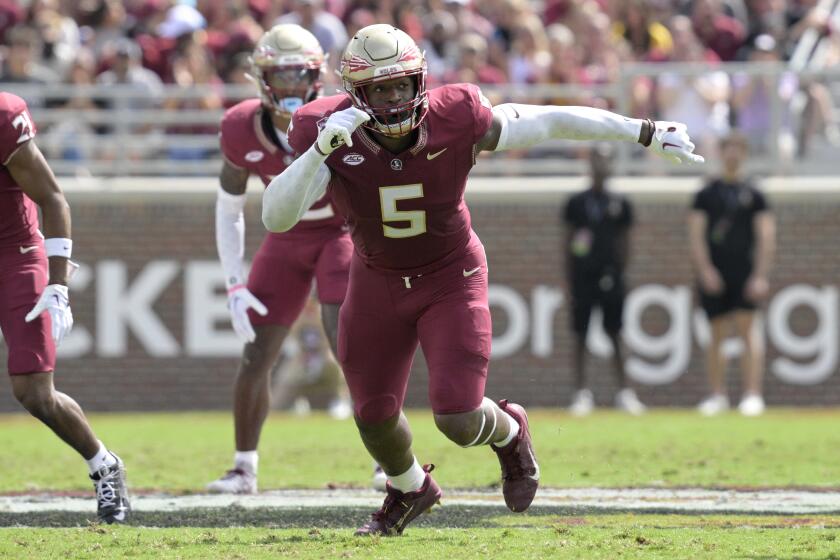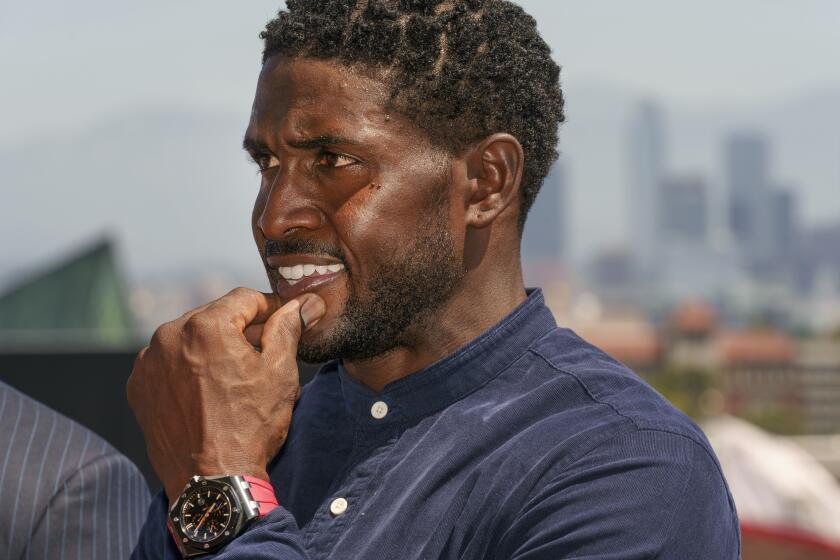Column: Fleeting fame against Nadal is tennis’ counterpoint to ‘Deflategate’
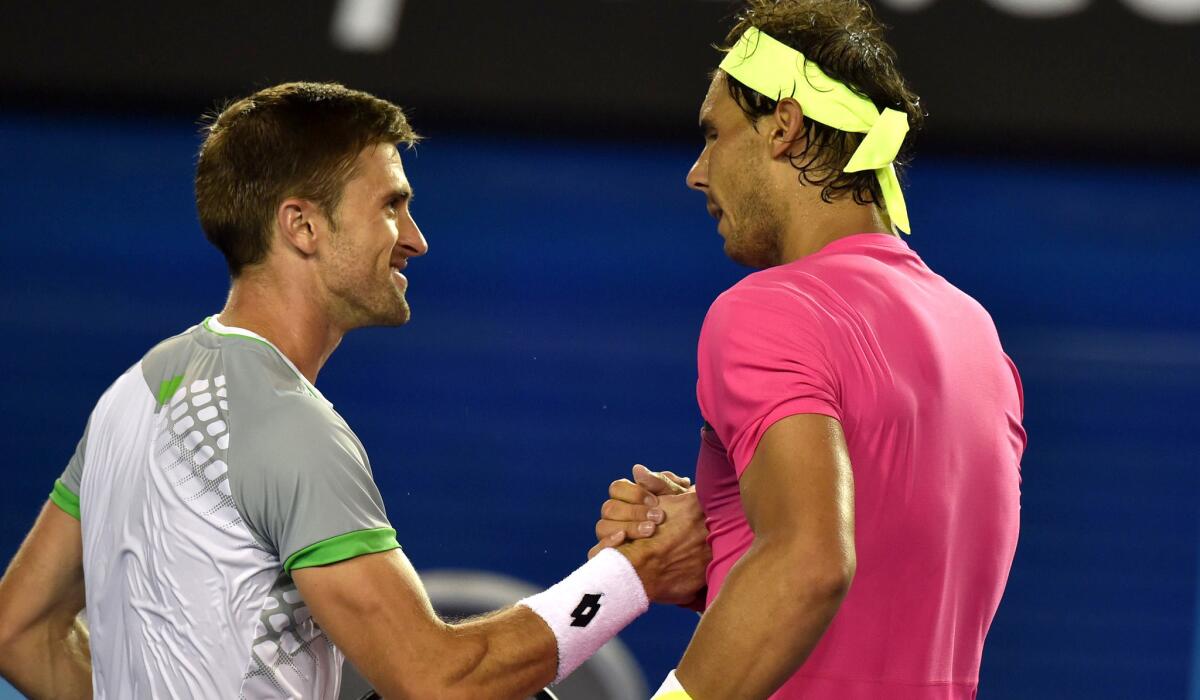
Tim Smyczek’s name is a little hard to spell and a little hard to pronounce. Here’s a story that will make him a little hard to forget.
Smyczek, 27, is a tennis pro. He comes from Milwaukee, hardly a tennis hotbed. He plays the violin, and when he finishes his tennis career he would like to become a lawyer.
His best world ranking was No. 73. That was November 2013. He currently hovers around No. 110.
That ranking means he usually has to qualify to get into the main draw of a major tournament. That was the case at this year’s Australian Open, where he battled through the large qualifying draw and saved eight set points in the first set of his first-round, main-draw match.
That set up a dream match for Smyczek, and for any lower-tier player on tour. In the second round, he would play Rafael Nadal. In Rod Laver Arena. In the featured night match, on Jan 21.
Nadal has won 14 major titles. He shares second place all-time in men’s singles with Pete Sampras, behind Roger Federer’s 17. Nadal has won about $75 million in his career, or more than Smyczek will ever imagine seeing, at least until he becomes a lawyer.
This was expected to be one of those early-round exercises in the obvious. Nadal swallows guys like Smyczek like breath mints.
But there they were, still playing some four-plus hours minutes into the match. Smyczek had actually led, two sets to one, after winning a third-set tiebreaker, 7-2.
Now, it was in the fifth set and Nadal was serving at 6-5, 30-love.
Smyczek had hung in superbly. He had embraced the big stage, although also battling it a bit.
“There were a couple of times during the match, I had to back away from the service line,” he said. “The atmosphere was great. I could tell the fans wanted me to keep fighting. But I had to step away and get past the goose bumps.”
At 30-love, Nadal rocked into his lefty service motion, made his toss, and it happened.
“A guy in the stands behind me shouted something loud,” Smyczek said. “It startled Rafa and his serve went long, much longer than he had missed one all night.”
Tough luck? Just the breaks?
Not to Smyczek, who became an immediate example of somebody who was raised right, in this case by Phil and Jan Smyczek of Hales Corners, Wis. He told the chair umpire and Nadal that he was, because of the fan disruption, giving him another first serve. That is allowable match etiquette. It is also seldom practiced.
“There was a lot of adrenaline at the moment,” Smyczek said. “It wasn’t like there was lots of time to weigh pros and cons. It was clear what the right call was.
“It was just the right thing to do.”
Nadal got his mulligan first serve in to go to match point. Smyczek saved three points to get it to deuce, but then Nadal hit one of his awe-inspiring baseline bullets to get to another match point.
“It was a laser backhand down the line,” Smyczek said. “Only Rafa could have hit that one.”
This time, Nadal converted the match point with a big serve that Smyczek returned, only to have the Spaniard close and put it away. It had been Smyczek’s moment in the bright lights, and he had lost, 6-2, 3-6, 6-7 (2), 6-3, 7-5.
Or had he lost?
News, and especially tennis nuances, travel slowly from Down Under. But early the next week, there was no less than Frank Deford, telling the Smyczek story on NPR. And he correctly wasn’t featuring Nadal’s victory, but Smyczek’s sportsmanship.
Soon, Smyczek, back home in Tampa, was a man in demand.
“I’ve probably had about 20 calls,” he said. “One of them was ESPN.com, and they asked me about the Super Bowl and Deflategate. I told them they had the wrong guy.”
When the match ended and the players shook hands, Nadal, a class act himself, addressed the moment to Smyczek.
“It was pretty loud,” Smyczek said, “but I know he thanked me for being such a gentleman.”
In his news conference, Nadal added to that. “What he [Smyczek] did at the end of the fifth set was amazing,” Nadal said.
Smyczek said he couldn’t remember anyone doing something like that for him during a match, but added that, with the current Hawk-Eye line-calling system, there isn’t much need, or chance, for player reversal.
Two past incidents come to mind.
In the 1985 L.A. Open final at UCLA, Stefan Edberg hit a shot on set point of the first set against Paul Annacone. The linesman called it in, the chair umpire didn’t reverse. Edberg, convinced they were wrong, gave the point to Annacone, who won the match and the L.A. title, 7-6, 6-7, 7-6.
In the semifinals of the 2008 Beijing Olympics, in the first point of a game in which Fernando Gonzalez was serving to James Blake at 8-9 of the third set, Blake hit a shot at a net-charging Gonzalez that was called out and that Blake believed had brushed Gonzalez’s racket on the way past. Gonzalez, who won, 11-9, in the final set, could have given the point to Blake if he knew the ball had touched him.
“I looked Fernando in the eye and he didn’t call it,” Blake famously said afterward, a quote that has haunted Gonzalez’s reputation.
A sad indication of where we stand on the sportsmanship issue came in the aftermath of that Blake match. Scoop Jackson of ESPN.com wrote, on that Aug. 16, 2008: “No disrespect to Blake, but what athlete in his right [or left] hemisphere would give away a point that critical?”
We can answer that. An athlete named Tim Smyczek.
Twitter: @DwyreLATimes
More to Read
Get our high school sports newsletter
Prep Rally is devoted to the SoCal high school sports experience, bringing you scores, stories and a behind-the-scenes look at what makes prep sports so popular.
You may occasionally receive promotional content from the Los Angeles Times.
